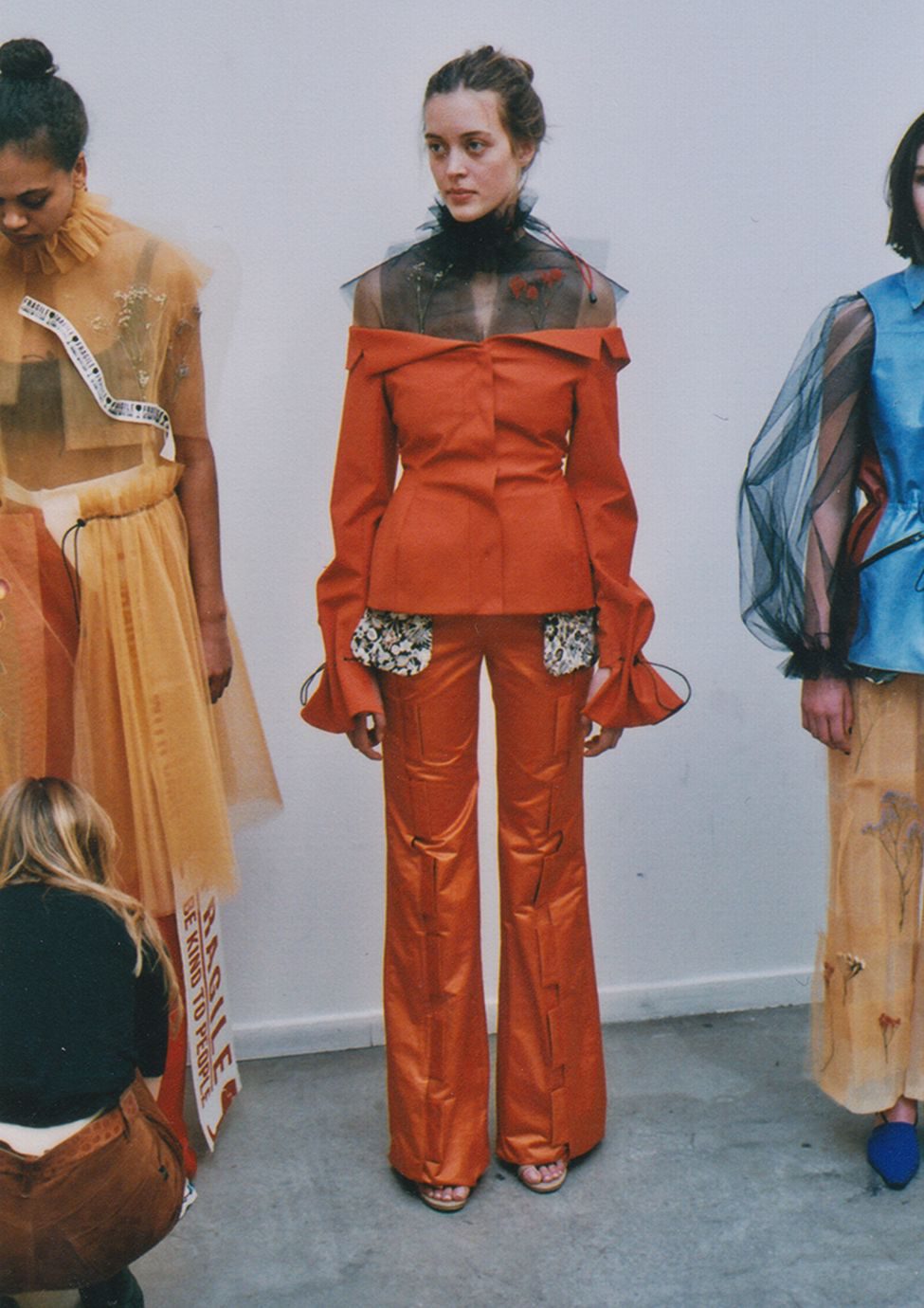The world of Béla Juttner seems colorful and earthily dark at the same time. For a few hours, the designer opens up his cosmos of fabrics, sketchbooks and minute detailed thinking. Being born in Germany, Bela’s first four years of life took place in both his home country Germany and clashing different India. There he experiences colours, swarming streets and highly creative people. When he moves back to Germany as an older child, the motley world stays within— transferred to the microcosmos of his crafting table.
How do you find solutions for your designs?
By making things myself. Tinkering with something as long as it takes to get to the point where I truly like it. I always create the patterns myself, even if I was never educated in it before. In a way, the academy is a platform for me to experiment and push my own sartorial boundaries and fight prejudices. Some people might believe the school must prepare us for the job market, but their spotlight lies on our personal language in design. And I don’t mind it, since it gives me the opportunity to focus on myself before facing the business part. I still have to find out which aesthetic I would like to work with. Design-wise the first semester has been a struggle, but personally, I’ve been thriving enormously.
The idea for handcrafted feathers derives from the historical falconer costume I had to recreate in the first semester. It is a similar technique, and it was important to me that things don’t become too literal, too kitschy. They are supposed to have a modern, almost technical look, like real feathers don’t.
What is your collection now based on?
I made a photographic series with a friend of mine. Wearing bright pieces out of my wardrobe we conquered an abandoned construction site during the night of New Year’s Eve. Those images had something wild, dark and almost animal-like. As if those creatures would reclaim their urban territory. Together with my research of the native tribes who once were to build up the cities we still live in, I create new urban shapes, mostly focused on extravagant pants, cut-out hoodies, and ear-pieces.
It seems like you are some sort of inventor, especially in your details.
Yes, and I also never ‘allowed’ myself to create easy things. To make just clothes. That has changed already and I accepted the power of simple solutions and familiar sartorial aesthetics. Concretely, this was noticeable with the cut-out hoodies and the earpieces. the idea itself is very simple, but it creates an immediate effect and suddenly I really like it, this clarity.
What brought you further in terms of designing or finding concepts?
Setting priorities and taking decisions are important things I’ve learned. Not only concerning the design and work process but also my social life, I do not separate the two anymore. The latter directly influences my designs, consciously or not, because it influences my life, my thoughts. This became visible in several key moments. One of them was a wild party, after which I walked home through the rain, wearing white high heels and a funny rubber glove on my head. To me, it proved how the most spontaneous and silly ideas can sometimes push one’s work to another level. Sparked by the funny glove, I played with the thought of incorporating gloves as a uniting element between the single silhouettes, on hands, feet, pockets. In the end, they were replaced by the jewelry pieces, but the idea of the ‘linking element’ was born that rainy night.


























